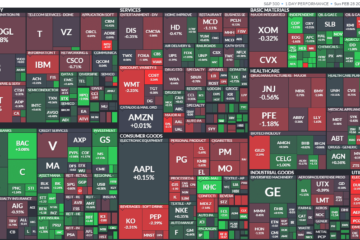Mutual Funds. Most people have no idea what they are. However, most people have heard the term at some point. Mutual funds are a vital part of achieving diversification within an investment portfolio. That previous sentence probably sounds fancy, but it really isn’t. Basically, mutual funds help you decrease the chance that your investments will go down in value. So if you really want to impress your friends at your next BBQ when you are having conversations about mutual funds (as I’m sure you always do), read on.
Mutual Funds
Mutual funds are one of the most common forms of investment. They are used for a variety of reasons. Mutual funds are used as the primary investment in most retirement accounts, college education savings accounts, trust accounts, as well as in non-retirement accounts for general investing.
To understand what a mutual fund is, think of a bucket. The mutual fund is the bucket. In the bucket, you can put stocks, bonds, cash, or even commodities in it. The items that you put into the bucket are the actual investments. The bucket itself (the mutual fund), is just what carries the investments.
As a small reminder here is what each of the items in the bucket are:
- Stocks: A share (or part) of the ownership of the company.
- Bonds: A debt contract that a company or government entity has with you requiring that they pay you back at a future date.
- Cash: Probably not actual currency, but some form of money that is in a bank somewhere and really safe.
- Commodities: Things like water, gold, silver, oil, hay, etc.
A mutual fund (think of the bucket again) can have any one of these options or any combination of these options in it. One mutual fund might have all stocks. Another mutual fund might have all bonds in it. And while another might have 25% of each stocks, bonds, cash, and commodities.
So now that you understand what a mutual fund is and how it’s structured, let me explain how it works.
Here’s how it works.
Robbie decides he wants to invest some of his money that he earns while being hired to sing at weddings. He’s not sure how to go about doing it though. Robbie takes the advice of some friends and decides to invest in a stock. He decides to invest $10,000 into Ridgefield Manufacturing Company.
Robbie is pretty happy with his investment decision for a while. That is until six months after he invested his money Ridgefield Manufacturing Company filed for bankruptcy. This means that Robbie has lost all of his money!
Here’s how it looks:
Robbie is really upset that he lost all of his money. But the wedding singing business has been good to him lately and he is able to save some more money and scrape up another $10,000 to invest. This time, however, he decided he doesn’t want to invest in one company because he’s afraid that if that company goes bankrupt, he will lose all of his money again. So Robbie decides to invest in four companies equally instead, Purdy Inc., Very Good Building and Co., Cowboy Restaurants, and Mapleworth.
A few months goes by and all of the companies are doing pretty well except for Mapleworth. Robbie decides to keep Mapleworth for a little while in hopes that it will turn around. However, after a little bit longer, Mapleworth files for bankruptcy and Robbie loses all the money that he invested in Mapleworth.
Here’s how it looks:
Although Robbie isn’t nearly as upset as he was at first when he lost his entire $10,000 investment, he still isn’t very happy with losing $2,500. He decides to sell his three remaining stocks and take the cash to reevaluate how he wants to invest.
After a while, Robbie is able to save another $2,500, giving him $10,000 to invest again. He decides that he doesn’t want to risk very much money but still wants to invest. He talks to a financial advisor and the financial advisor talks to him about opening up a mutual fund. The mutual fund that the advisor suggests to Robbie is one that consists of 100 companies all weighted equally (the same amount of money will be invested into each company). Robbie agrees, pays a small fee to the financial advisor and opens the mutual fund.
For a few months, the mutual fund is okay. Just like the previous times that he has invested, the companies don’t really gain value or lose value. That is until one of the companies in Robbie’s mutual fund goes bankrupt. The mutual fund loses all of the money invested in that one company (think of it as taking an item out of the bucket).
Here’s how it looks:
I hope you see the value of having a mutual fund. In this case for Robbie, he only lost $100 of his original $10,000 investment leaving him with $9,900. The value that mutual funds have is diversification. If you invest in one company and that company’s value goes down or if they were to go bankrupt then you lose all of the money that you invested. But if you have a mutual fund that has a whole bunch of companies in it, and one decreases in value or goes bankrupt then you only lose a small portion of your investment. The more companies that you invest in, the lower default risk that you have.
You may be asking yourself, “Why do I need to buy a mutual fund when I could just buy several different companies and decrease my risk with diversification?” The answer is that if you buy a whole bunch of different companies stock individually it will be (1) expensive because you have to pay commissions on all of those trades, (2) difficult to research the ins and outs of each company, and (3) difficult to manage which investments to keep or sell.
A mutual fund can include stocks, bonds, cash, or commodities (as stated before). For example, in the chart above, each of the squares can represent any combination of a share of a stock, a bond, cash, or a share of a commodity.
This leads me to the last point. We’ve already discussed the benefits of mutual funds in regards to diversification. But if you are still nervous about investing in a mutual fund because it seems too risky let me put your mind at ease.
Mutual funds can achieve virtually any investment objective that most investors would need. There are 8 primary ways that mutual funds can be invested. However, rest assured, if you can think of a way that you would want to invest your money, you can find a mutual fund to match it. These are the main ways that mutual funds can be invested:
- Conservative Mutual Funds: Meaning with little to no risk but with a small payoff. These funds consist primarily of cash, low-risk bonds, and some stocks of large companies that are relatively safe (think of Walmart, GE, Microsoft, P&G, etc.)
- Moderate Mutual Funds: Meaning with some risk but not too much and a medium payoff. These funds would probably include a mixture of bonds, large relatively safe companies, and small more aggressive companies (that have a higher risk).
- Aggressive Mutual Funds: Meaning with a lot more risk but a large potential payoff. These funds would consist of mostly medium and small companies that don’t have the track record and longevity of others (thus they are more risky).
- Environmental, Social, and Governance (ESG) Mutual Funds: These funds can be conservative, moderate, or aggressive. ESG funds invest in companies that are doing things to help the environment, promote social justice, help alleviate poverty, etc.
- Reverse Mutual Funds: These funds are usually pretty aggressive. But without getting too into the weeds, these funds try to do exactly the opposite that the overall market does. For example, if the market goes up an average of 10% over a year, a reverse mutual fund will try to decrease by 10% in the same year.
- Bond Mutual Funds: Bond mutual funds are usually pretty conservative. They are either completely or mostly consisting of bonds and not stocks or cash.
- Regional Mutual Funds: Regional mutual funds will invest in any combination of cash, stocks, bonds, or commodities that are located in a particular region. These are really popular in states. For example, you could buy a State of Colorado mutual fund, or an upper Northeast US mutual fund, etc.
- Sector Mutual Funds: Sector mutual funds are usually a little more risky. They are typically funds that consist of a different business sector. This could mean that all the companies in the fund are in the airline industry, tech sector, retail, etc.
This is how mutual funds work. Just remember, whenever you invest in your retirement account, an education savings account or a trust, you are most likely investing in some type(s) of mutual funds. I hope you’re not scared of investing in the market because you might lose money. I hope that I have helped you overcome that fear.
But most of all, I hope that you have grown your Money Muscle! Until next time!



0 Comments